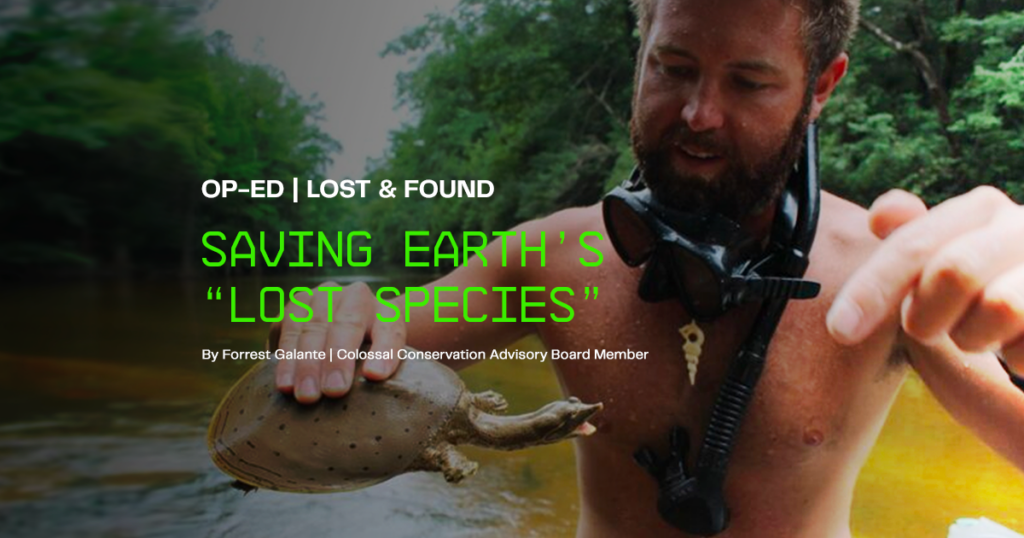One of the most exhilarating moments in my career came on February 17, 2019 on the rugged volcanic island of Fernandina in the Galapagos.
I still feel the blistering heat of the sun, reflecting off the sharp, blackened edges of the hardened lava flow, whenever I think of that day. My team and I were on an expedition to rediscover an ancient creature, one not seen for centuries. We had endured the treacherous conditions on this remote landscape for days; the soles of our feet burning, our bodies aching, and some of the team even succumbing to heatstroke.
But hope has a way of fueling determination. And so we pressed on.
Then, suddenly, it happened. Buried deep under a pile of brush, sheltering from the scorching equatorial sun, we found her – the lost being we had come to find. A sight I will never forget.
It was a living, breathing, Fernandina Island Galapagos tortoise.
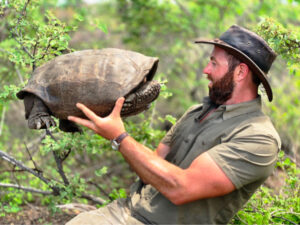
Locking eyes with the first Fernandina tortoise seen in 114 years
Long believed to be extinct, this magnificent C. phantasticus female, who we nicknamed “Fern,” appeared before me after her kind went missing for 114 years. With her rediscovery, the number of known Fernandina tortoises went from a mere 0 to a very symbolic 1.
Into the Wild Unknown
As an avid explorer and borderline lunatic with a fanatical fascination with rare and endangered creatures, I’ve had the privilege of making expeditions to find “lost species” – like Fernanda – my life’s work. After years of exploring this enthralling realm and finding many such creatures, I’m here to share the importance of these discoveries in our ongoing fight against the extinction crisis.
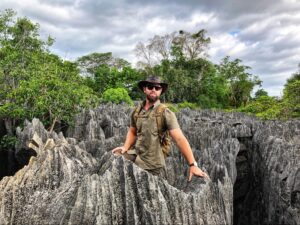
When on the pursuit of lost creatures, I often find myself in the most remote corners of the world.
First, however, we must define what a “lost species” even is. This is a term given to creatures not seen for decades (or centuries, as in Fern’s case), and presumed to be extinct [1], or species yet unknown.
One of the reasons I’m so passionate about this topic is because, although it might not seem like it, our natural world remains largely uncharted and teeming with lost creatures.
Don’t believe me?
Consider this: scientists estimate that 86% of all land dwelling species and 91% of all ocean creatures have yet to be named or cataloged [2]. Given that we’ve identified approximately 1.2 million species, this suggests there may be between 8 to 10 million species sharing our planet, the majority still unknown to us [3].

Surrounded by blue mau mau while on a free five at the Poor Knights Islands, New Zealand
Then there are those creatures who we think have disappeared into the oblivion we call extinction, really only to be eluding our collective sight. These cases are more prevalent than many might think; a paper published in 2011 found that in the last 122 years, at least 351 species thought to be extinct have been rediscovered, a number that has certainly grown since the paper’s publication [4].

Working with Spiny Softshell turtles in the American South as preparation for my Expedition to look for the Yangtze giant softshell in Vietnam
What these statistics underscore to me is the vastness of our world that remains hidden and unknown to us. Think about all the incredible, magical creatures still out there, waiting to be discovered, each holding its own secrets about life, evolution, and our planet’s rich natural history.
Behind the Search: The Science and Conservation of Lost Species
Every expedition my team and I embark on has a backstory with months, if not years, of meticulous preparation. These efforts require meticulous planning, cutting-edge technology, and a deep understanding of the ecosystems we enter. We study historical records, consult with local communities, and employ state-of-the-art tools to maximize our chances of success.
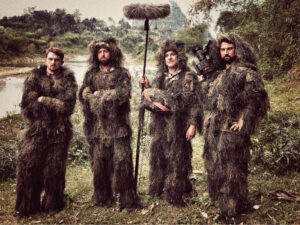
Decked out head to toe in ghillie suits as we prepare to stake out potential Saola habitat in the Anemites.
Every discovery made provides valuable data that can help inform conservation strategies and policies to protect these species and their habitats. This ensures that they do not fade (or fade again) into obscurity. After all, to save our planet’s wild things, we must first recognize and appreciate their existence.
Take, as an example, the rediscovery of the Victorian grassland earless dragon (Tympanocryptis pinguicolla), a small Australian lizard last seen in 1969. Thought to be extinct for more than 50 years, 16 dragons were found this year in a disclosed area west of Melbourne (4). Now, the Australian government and Colossal are supporting the efforts of Zoos Victoria to conserve and restore the species.
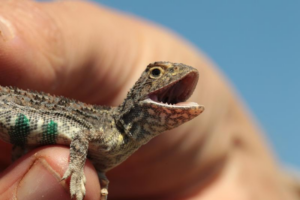
After more than 50 years missing, the Victorian grassland earless dragon was rediscovered in February. Source: Wikimedia
By focusing our efforts on these tiny but mighty dragons, we not only safeguard their future but also protect the delicate balance of the entire grassland ecosystem they call home. More importantly, I believe, each lost species we find provides a glimmer of hope, a reason to keep pushing forward in the face of adversity.
In a world where environmental news is mostly disheartening, the rediscovery of lost species spurs renewed interest in nature and serves as a powerful motivating force for conservation.
Restoring the Lost
To many, Fernanda the tortoise and other rediscovered lost species like her are seen as ghosts of a bygone era. But to me, their presence is a testament to the resilience of life. These creatures are not forgotten footnotes in our planet’s narrative; they are central characters, and their stories are far from over.
As a member of the Colossal Conservation Advisory Board, I am immensely proud to be part of an organization that recognizes the value of lost species in the fight against the extinction crisis. One of Colossal’s core conservation strategies, “Finding Lost Species”, aligns perfectly with this ethos. It’s not just about conserving what we have; it’s about reclaiming what we thought we’d lost, and giving those species a fighting chance to thrive again.

I’m happy to sit as a member of Colossal’s incredible Conservation Advisory Board
Each rediscovery, like the Fernandina Island Galapagos tortoise, is a testament not only to our determination but also to the remarkable resilience of nature itself. It is a symbol of the extraordinary ability of our planet to recover when given the opportunity, demonstrating that, with a little help, the intricate web of life can mend and flourish once more.
Conservation is not a privilege or a noble endeavor reserved for the wealthy; it’s a necessity for all of us. Let us never forget the beauty and importance of lost species, symbolizing humanity’s past wrongs – and serving as reminders that with dedication, innovation, and unwavering commitment, we can overcome the challenges before us and pave the way for a brighter, more biodiverse future.
Forrest Galante

About Forrest Galante
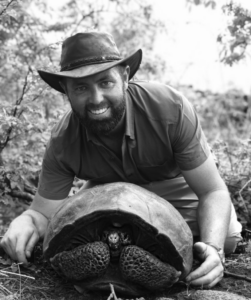 Forrest is wildlife biologist, owner of Phantasticus Pictures and host of several successful wildlife tv shows. His focus is on animals facing extinction, whether it be mislabeling or because of human wildlife conflicts. Since 2018, he has captured evidence of the existence of eight animals once believed to be extinct. Forrest continues to conduct field expeditions and surveys, working not just with believed-extinct animals but also with a wide range of other wildlife. Learn more about Colossal’s Advisors
Forrest is wildlife biologist, owner of Phantasticus Pictures and host of several successful wildlife tv shows. His focus is on animals facing extinction, whether it be mislabeling or because of human wildlife conflicts. Since 2018, he has captured evidence of the existence of eight animals once believed to be extinct. Forrest continues to conduct field expeditions and surveys, working not just with believed-extinct animals but also with a wide range of other wildlife. Learn more about Colossal’s Advisors
References:
- “Lost Species – Re:Wild.” Re:Wild Lost Species, www.rewild.org/lost-species. Accessed 15 Aug. 2023.
- Mora, Camilo, et al. “How Many Species Are There on Earth and in the Ocean?” PLOS Biology, 23 Aug. 2011, journals.plos.org/plosbiology/article/info:doi/10.1371/journal.pbio.1001127.
- “Biodiversity.” Education, education.nationalgeographic.org/resource/biodiversity/. Accessed 15 Aug. 2023.
- Scheffers, Brett R., et al. “The World’s Rediscovered Species: Back from the Brink?” PLOS ONE, 27 July 2011, journals.plos.org/plosone/article?id=10.1371%2Fjournal.pone.0022531#:~:text=Over%20the%20past%20122%20years,of%203%E2%80%93331%20years).
- Magazine, Smithsonian. “Scientists Find the ‘extinct’ Victorian Earless Dragon, Not Seen since 1969.” Smithsonian.Com, 28 June 2023, www.smithsonianmag.com/smart-news/scientists-find-the-extinct-victorian-earless-dragon-not-seen-since-1969-180982440/.

